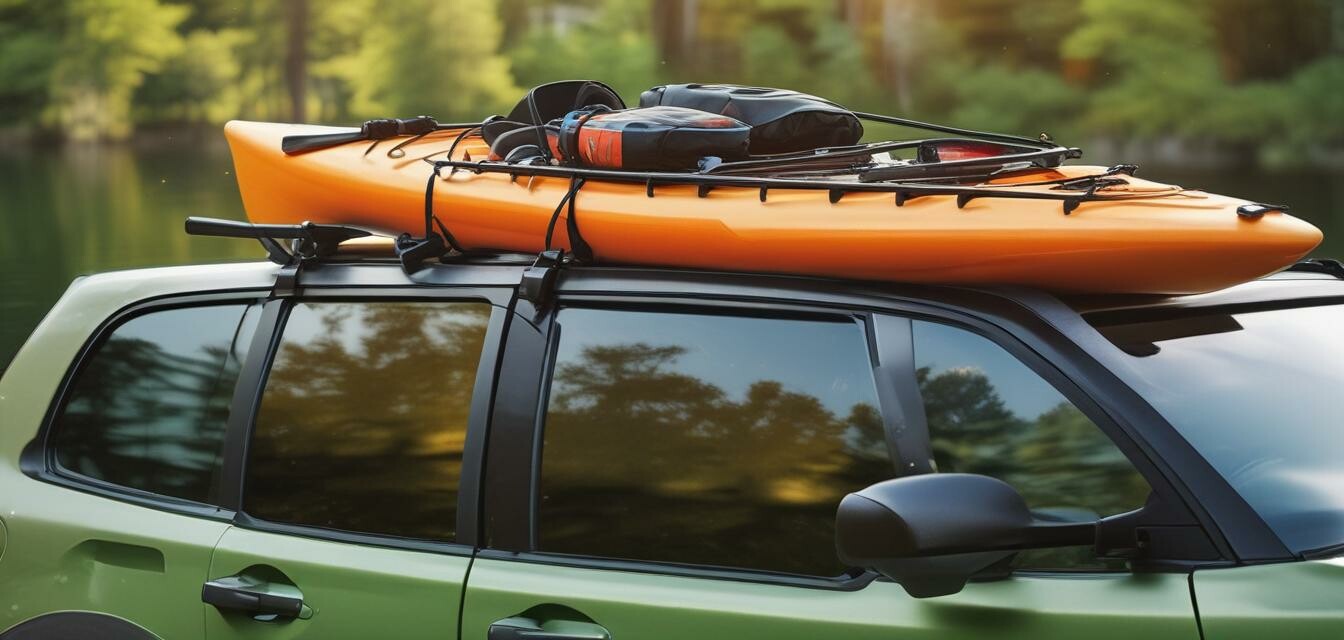
Best Practices for Securing Your Kayak on a Roof Rack
Key Takeaways
- Choose the right roof rack for your kayak.
- Use high-quality straps and accessories.
- Secure your kayak properly to avoid damage.
- Perform maintenance checks before every trip.
- Consider airflow to avoid vibration and noise.
Transporting your kayak can be a fun experience, but it's essential to learn the best practices for securing it to a roof rack to ensure safe and effective transportation. This guide will provide you with expert advice and insights to help you keep your kayak secure during travel.
Understanding Roof Racks
Before diving into securing your kayak, it's essential to understand the various types of roof racks available:
| Type of Roof Rack | Features | Best For |
|---|---|---|
| Crossbars | Long, horizontal bars that run across the roof. | Most vehicles; can carry multiple types of loads. |
| J-Cradles | Specialized racks designed for vertical placement. | Kayaks and canoes. |
| Fork Mounts | Hold the kayak by the hull without pads. | Performance kayaks. |
Choosing a Kayak Rack
Select a kayak rack that meets your needs. For instance, if you’re interested in a versatile option that offers maximum protection for your kayaks, consider the Kayak/Surf/Ski Roof Carrier Rack. Here's a brief overview:
Kayak/Surf/Ski Roof Carrier Rack
A multifunctional roof rack for easy transportation of kayaks, skis, and surfboards. Built for durability and easy installation.
Learn MoreBest Practices in Securing Your Kayak
1. Use Quality Straps
Always use durable and high-quality straps designed for securing kayaks. Look for straps that:
- Offer UV resistance to prevent degradation.
- Have a wide surface area to distribute pressure.
- Are adjustable for a snug fit.
2. Proper Kayak Positioning
Before securing your kayak, place it in the correct orientation on the roof rack:
- Ensure the hull is facing upward.
- Position the kayak centrally on the rack.
- Keep the cockpit towards the rear for better aerodynamics.
3. Use Padded Supports
Padded supports can help protect your kayak from scratches and dents. Ensure they are placed where they can handle the weight and pressure:
- Adjust the pads to fit the contour of your kayak.
- Double-check the positioning before hitting the road.
4. Double-Check Before Departure
Prior to leaving, double-check the following:
- All straps are tight and secure.
- The kayak does not wobble or move.
- All accessories are intact and functioning properly.
5. Maintain Your Roof Rack
Regular maintenance of your roof rack is crucial:
- Inspect for rust or damage.
- Clean the surface to ensure grip.
- Replace any worn-out parts promptly.
Common Mistakes to Avoid
Avoid these common pitfalls when securing your kayak:
| Mistake | Consequence |
|---|---|
| Using inadequate straps | Possible kayak damage and detachment during travel. |
| Improper positioning | Affects stability and airflow, leading to increased vibrations. |
| Neglecting maintenance | Increased risk of accidents due to weakened equipment. |
Conclusion
Securing your kayak on a roof rack properly is essential for safety and efficiency. By following these best practices, you will be able to transport your kayak confidently and enjoy the adventure that awaits you. For more information on roof racks and accessories, check out our detailed guides on kayak racks and buying guides.
Tips for Beginners
- Practice securing your kayak in a safe environment before your first trip.
- Watch tutorials online for visual guidance.
- Consider getting help from experienced kayakers.

